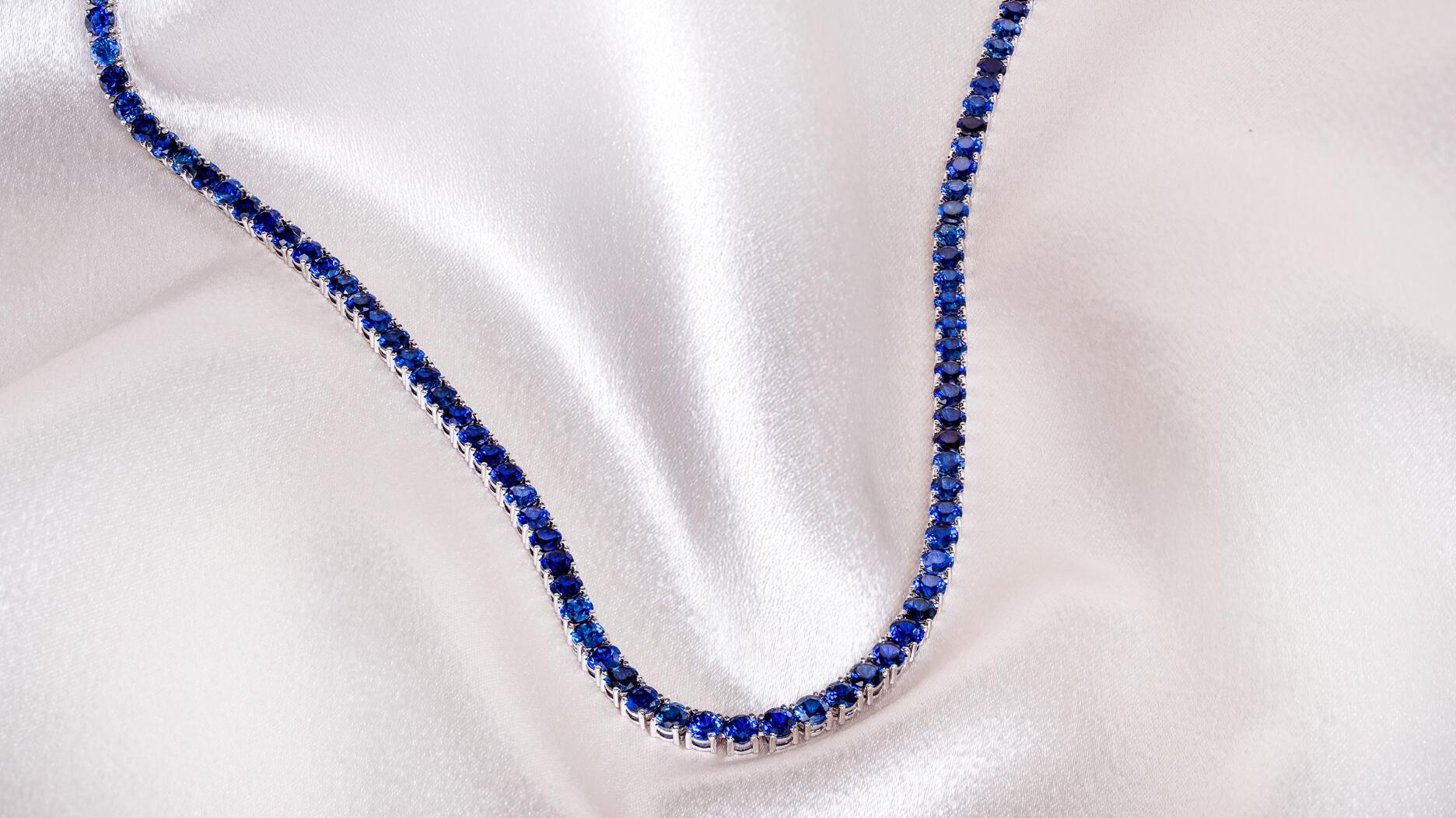Carlos Jose Hernandez and Joshua Zuazo were sentenced to life without the possibility of parole in the 2024 murder of Hussein “Sam” Murray.
Analysis: Light’s Out at Signet
Editor-in-Chief Michelle Graff breaks down the chain of events that led to the departure of Signet Jewelers CEO Mark Light.

Shortly after Signet’s March earnings call, I was on the phone with an industry colleague who said he believed that Mark Light’s days at the helm of the nearly $6 billion jewelry store chain were numbered.
His evidence: board Chairman Todd Stitzer’s backing of Light during the call. A member of any board indicating that the CEO’s job is secure, my colleague rightly observed, is generally a sign that it’s not.
So it wasn’t a shock when the news broke Monday morning that the 55-year-old Light would be retiring at the end of the month due to “health reasons,” with a company spokesman telling National Jeweler via email on Wednesday that while Light’s condition is not life-threatening, he has been hospitalized and has had a couple of “surgical procedures.”
There’s a lot to unpack surrounding the departure of Light, who spent his entire career at Signet, following in the footsteps of his father, Nate.
First, let’s start with Signet’s recent financial performance.
The company has seen comps fall for the last four quarters, and its performance this past holiday season was described as “disappointing” by management, with same-store sales down 5 percent in November and December.
Signet’s struggle with in-store sales is understandable, for a couple of reasons.
Number one, the company’s target demographic, the American middle class, has seen its buying power diminish.
RELATED CONTENT: Middle class problemsNumber two, the majority of Signet’s stores are located in malls, which are struggling to survive, particularly those that cater to middle-income Americans. At the close of 2017, the company had a little over 2,800 Kay, Jared, Zales and Piercing Pagoda stores in the United States and Puerto Rico. Of those, 1,955, or about 70 percent, were located in malls.
But what was perhaps more concerning this past holiday season was online performance. At a time when online sales can be a bright spot for brick-and-mortar retailers, Signet’s e-commerce sales slid 3 percent because, the company said, it had technical problems with some of its websites.
So you have a retailer with an eroded customer base, a lot of stores in the wrong places and websites that don’t work very well in an age when e-commerce is important as ever.
Then, you throw in a couple of huge public relations messes and questions from investors about your credit program (which Signet is now going to outsource), and it’s not hard to see why this massive chain
The most recent of these messes was The Washington Post’s February story detailing 1,309 pages of sworn statements from former male and female employees who told of a culture where women were discriminated against and sexually harassed.
Here’s the background on this story.
The declarations were part of an ongoing class-action arbitration first filed in 2008 in which female employees accuse the company of pay and promotion discrimination. The arbitration is ongoing and set to go to trial in March 2018.
Now--and Signet has emphasized this point over and over again--there are no claims of sexual harassment in the arbitration.
But the documents the Post reported on earlier this year were filed as part of the case; they had just been under wraps for years.
One of the stipulations of their release was that the names of any specific individuals accused of harassing conduct be redacted because they were not parties to the litigation. Yet there was one name mentioned in Post story--Light’s.
The Post cited a 2013 memorandum filed by the attorneys who represent the women in the pay and promotion discrimination class-action arbitration in which Light, along with a few other executives, are accused of creating a culture were women feel devalued and compelled to acquiesce to sexual advances in order to succeed, and for having sex with female employees.
The story garnered more than 700 comments and was widely covered, not only by the trade but also the consumer media, outlets like USA Today and NBC Nightly News.
A little more than a week after the Post story ran, Signet had its fourth quarter results conference call and Stitzer took the reins from Light, something I can’t recall happening in the nearly 10 years I’ve been covering the company.
For the first 26 minutes of what turned out to be an hour-and-15-minute-long call, Stitzer was on clean-up duty. He ran down the list of issues currently confronting the company, starting with the bombshell Post story, then credit issues and the allegations of stone-swapping at Kay stores.
This is also the call where, as I mentioned above, he pledged the board’s support for Light and the executive management team.
But Stitzer also said this: “Our board is very focused on management’s performance. During the course of a very challenging year, the board and I have become much more actively involved with the business, and we’ll continue this enhanced level of involvement.”
So it’s not at all surprising that the individual picked to succeed Light, Virginia C. Drosos, is a member of the board and not from Signet’s current, and now very much changed, upper ranks.
The Latest

Yood will serve alongside Eduard Stefanescu, the sustainability manager for C.Hafner, a precious metals refiner in Germany.

The New Orleans jeweler is also hosting pop-up jewelry boutiques in New York City and Dallas.

How Jewelers of America’s 20 Under 40 are leading to ensure a brighter future for the jewelry industry.

Set in a Tiffany & Co. necklace, it sold for $4.2 million, the highest price and price per carat paid for a Paraíba tourmaline at auction.


The jeweler’s “Deep Freeze” display showcases its iconic jewelry designs frozen in a vintage icebox.

Take luxury gifting to new heights this holiday season with the jeweler’s showstopping 12-carat sphene ring.

Roseco’s 704-page catalog showcases new lab-grown diamonds, findings, tools & more—available in print or interactive digital editions.

This year's theme is “Unveiling the Depths of the Ocean.”

In its annual report, Pinterest noted an increase in searches for brooches, heirloom jewelry, and ‘80s luxury.

Starting Jan. 1, customers can request the service for opal, peridot, and demantoid garnet.

The 111-year-old retailer celebrated the opening of its new location in Salem, New Hampshire, which is its third store in the state.

The new catalog features its most popular chains as well as new styles.

The filmmaker’s personal F.P. Journe “FFC” prototype was the star of Phillips’ recent record-setting watch auction in New York.

The new location in the Design District pays homage to Miami’s Art Deco heritage and its connection to the ocean.

Inflations, tariffs, and politics—including the government shutdown—were among consumers’ top concerns last month.

“Longtime favorite” presenters, as well as first-time speakers, will lead talks and workshops at the annual event in Tucson next year.

Silas Smith of Meridian Metalworks won the challenge with his pendant that blends Australian and American landscapes.

The sale of the 31.68-carat, sunset-hued stone was part of Sotheby’s first series of events and auctions in Abu Dhabi.

Most customers who walk into your store this month have made up their minds. Your job is to validate their choice, Emmanuel Raheb writes.

The collection features characters and motifs from Ukrainian folklore, including an enchanted mirror and a magic egg.

MatrixGold 3.11, the newest version of the jewelry design program, offers more flexibility, precision, and creative control.

The pavilion will be part of the 2026 JA New York Spring show, scheduled for March 15 to 17.

Kadet, a 1994 National Jeweler Retailer Hall of Fame inductee, helped grow the family-owned retailer in the Chicago area and beyond.

Billed as the world’s smallest wearable, Lumia Health’s new smart earrings have a health tracker subtly embedded in the back.

Don’t let those with December birthdays feel blue. Help them celebrate their month with blue zircon, turquoise, and tanzanite.

The new pink sapphire version of the piece dances with its wearer in the brand’s “Icons After Dark” holiday campaign.


























